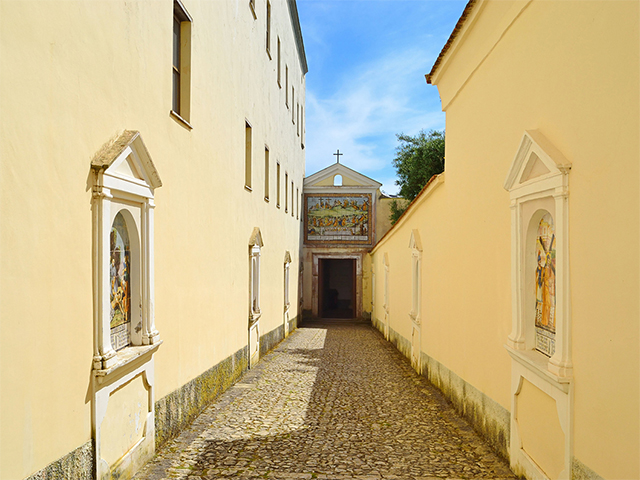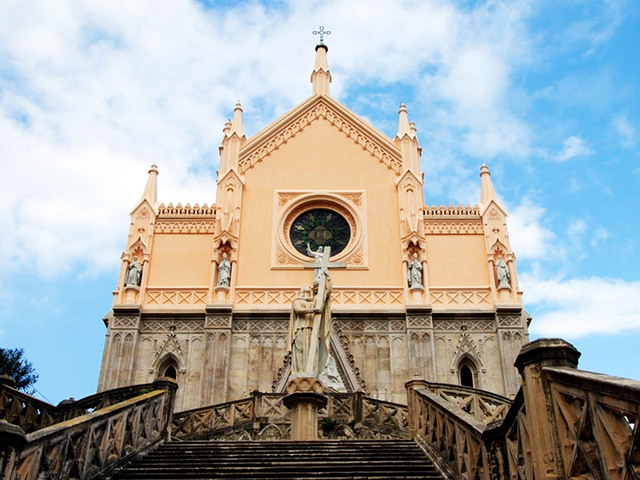Church of San Giovanni a Mare
Discover the small Church of San Giovanni a Mare in the heart of medieval Gaeta: history, description, frescoes and latest restoration worksThe Church of San Giovanni a Mare, also known as the Church of San Giuseppe, is a true hidden gem in the heart of Gaeta. Risen up on an ancient sacred Christian place destroyed by the earthquake of 1213, the church was built using some strip elements, like the columns, all unequal between them while in the 16th and 17th century it was enriched with frescoes and baroque decorations removed after the restoration in 1928.
From 1998 to date, the church has been subject to many restorations, the last of which began in April 2015 and are expected to be concluded, except for unforeseen events, on October 23, the date after which the Church of San Giovanni a Mare will shine again and be finally reopened to public.
In this article thanks to the invaluable contribution of Dr. Eleonora Chinappi from Association Scrinium Arte we tell you the history of this small but significant church, located in the heart of medieval Gaeta.
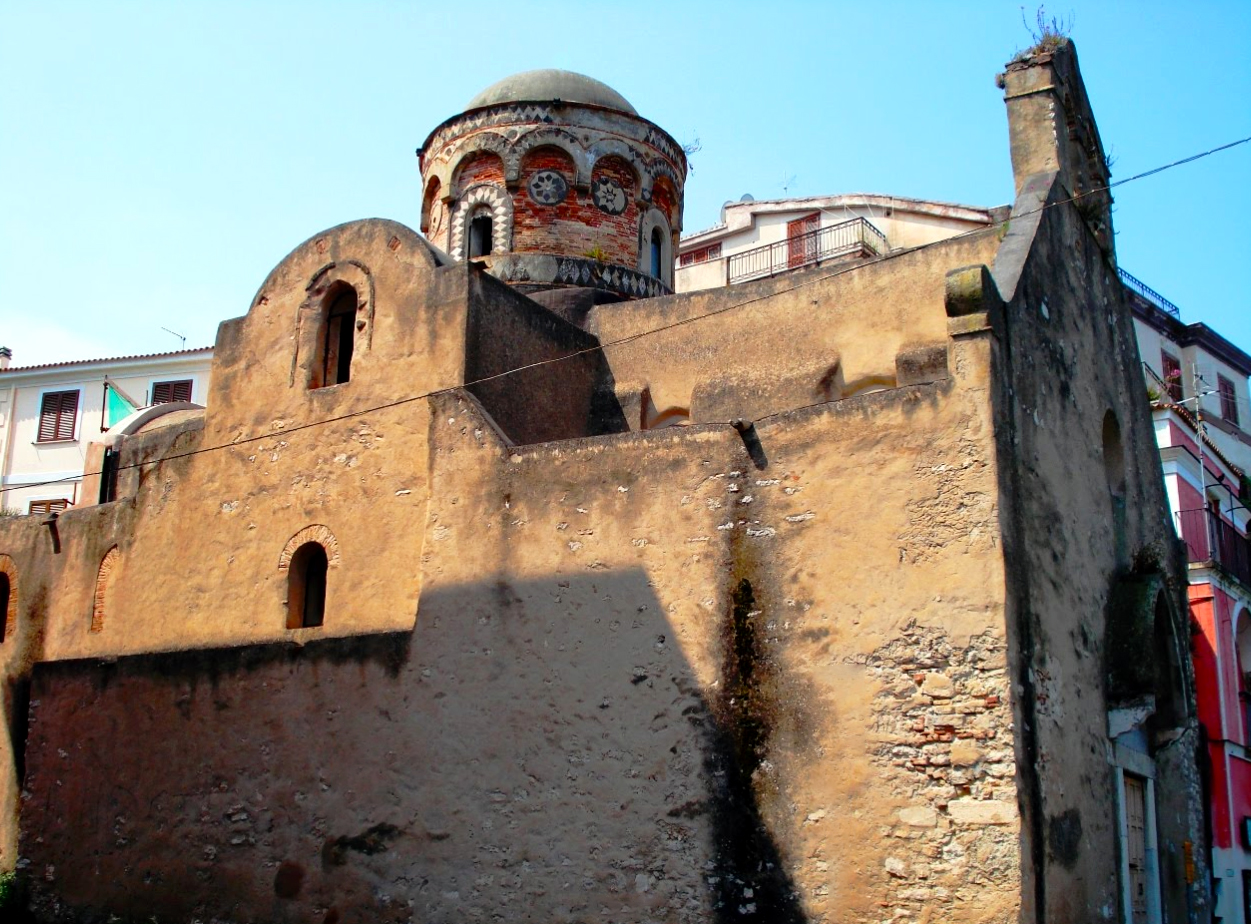
Gaeta - The Church of San Giovanni a Mare before the last restoration works
CHURCH OF SAN GIOVANNI A MARE: HISTORY AND DESCRIPTION
The ancient Church of San Giovanni is located on the seafront with the facade facing the splendid Gulf of Gaeta, a few steps from the Cathedral. The close proximity to the coastline determined from its beginnings the creation of a pavement with a slight downward slope, so as to facilitate the flow of water during the days of high tide.
The building of uncertain foundation, perhaps linked to the secular commission, is mentioned in the Codex Diplomaticus Cajetanus, primary source for studies on the city, starting from the 11th century.
Easily recognizable, the church is distinguished by its dome of Byzantine influence decorated along the drum with inlaid masonry, with lozenges of polychromed tuff that compose friezes and starry nights motifs.
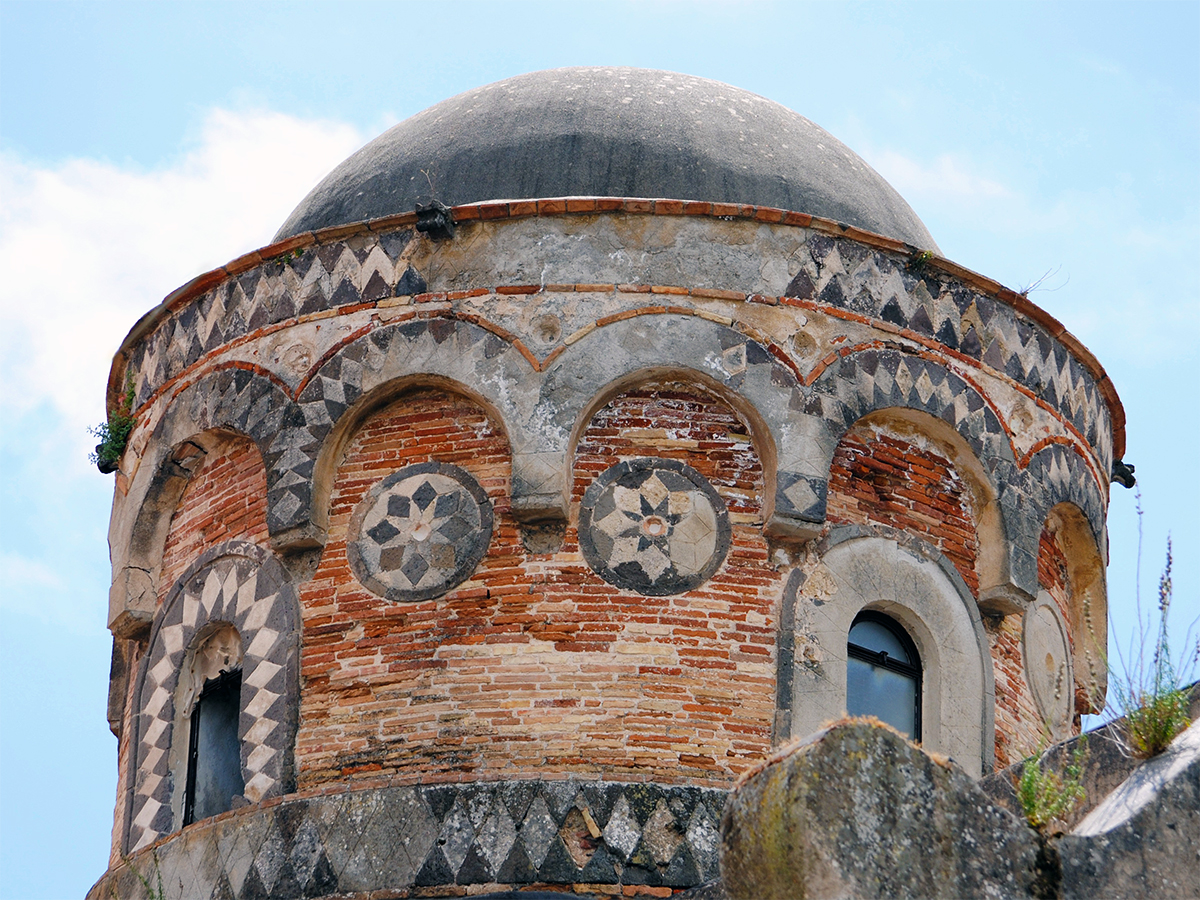
Gaeta, Church of San Giovanni a Mare - Dome (picture by Ass. Scrinium Arte)
From the arhitectonical point of view, the interior is divided in three naves, organised by round arches on top of columns with reused capitels and it ends with a raised presbitery, where there is the frontal of the altar built from the front of a Classical age sarcophagus remanufactured in the middle ages with the affixing to the center of a large cross with a twist.
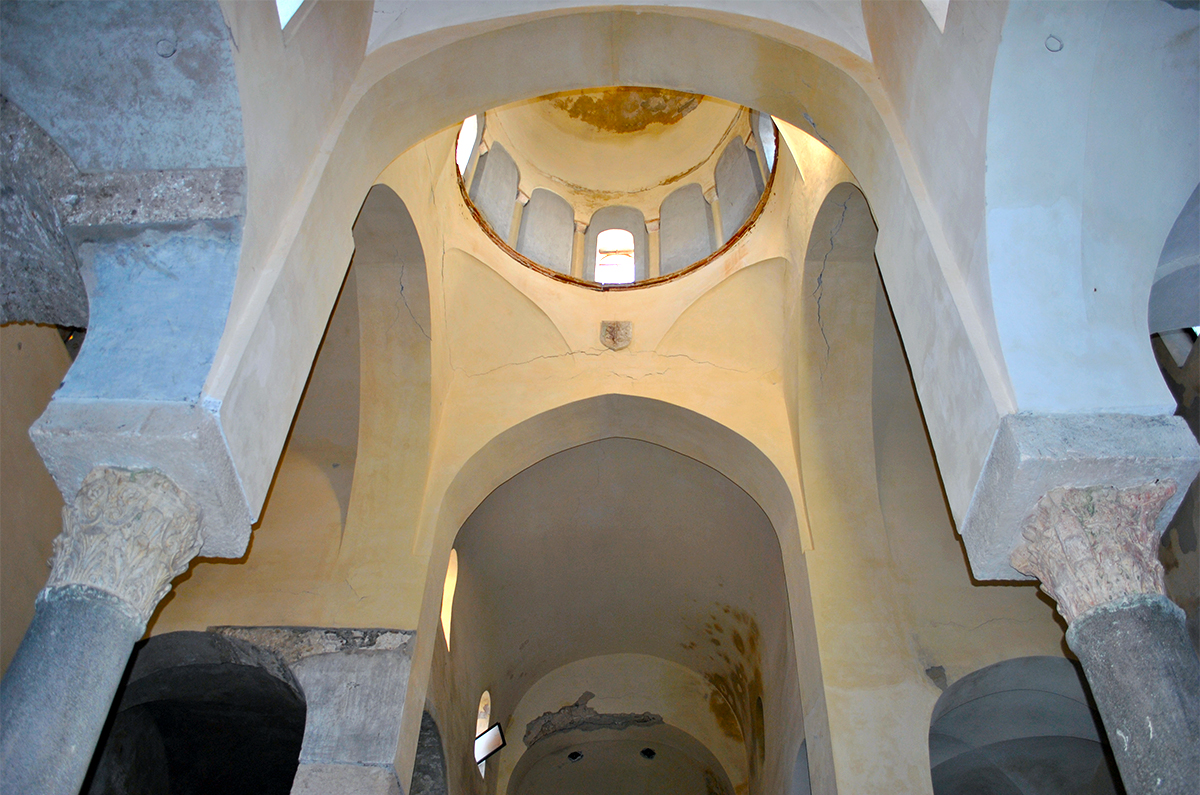
Gaeta, Church of San Giovanni a Mare, interior - Picture by Ass. Scrinium Arte
Many are the surviving frescoes. Among these, the painting of greater interest in terms of its conservation status is at the left apse.
The work depicts a beautiful image of the Majesty, the Virgin enthroned with Child flanked by St. Michael, St. Gabriel Archangel and St. John the Evangelist.
The fresco, which was made by a Campania-Lazio trained artist, is an important example of the painting of early fourteenth century, witnessing the natural fusion, in a border town as Gaeta, between the Roman painting of the end of the 13th century and the Angevin culture grown in Naples, then the capital of the southern kingdom.

The Majesty - Picture by Ass. Scrinium Arte
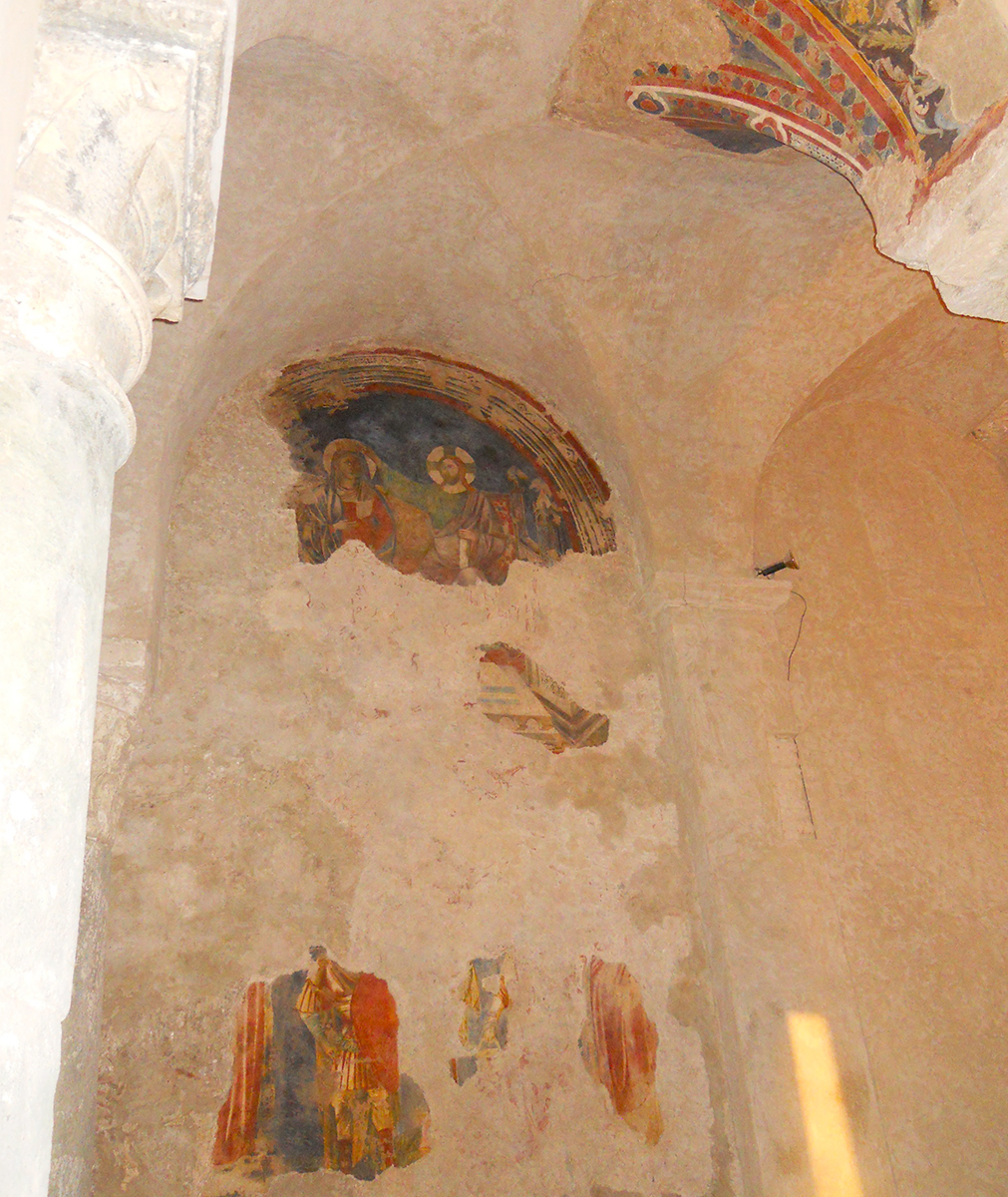
Church of San Giovanni a mare - other frescoes in the left aisle
The church of San Giovanni a Mare, thanks to recent restoration works will finally be appreciated in all its appeal.
by Eleonora Chinappi, Association Scrinium Arte.
Useful information
Church of San Giovanni a Mare
- HOW TO GET THERE
From the Port of Gaeta: Reaching the church of San Giovanni (often mentioned as Church of San Giuseppe) is very easy. You can get there in less than 20 minutes walking along the Promenade Giovanni Caboto and then once you reach Piazzale Caboto continuing along Via Docibile until the intersection with Via Bausan.
- TIMETABLES
The next opening is expected on October 23, 2015. Once completely restored, the Church will be reopened to the faithful for Sunday celebrations in major holidays, and for the celebrations for the Merchant Navy, the military and police forces of the territory. There will also be established times for free access to public (even with the presence of guides) every day in the morning and in the afternoon.
- PRICES
Free admission



 PORT MOBILITY CIVITAVECCHIA
PORT MOBILITY CIVITAVECCHIA








